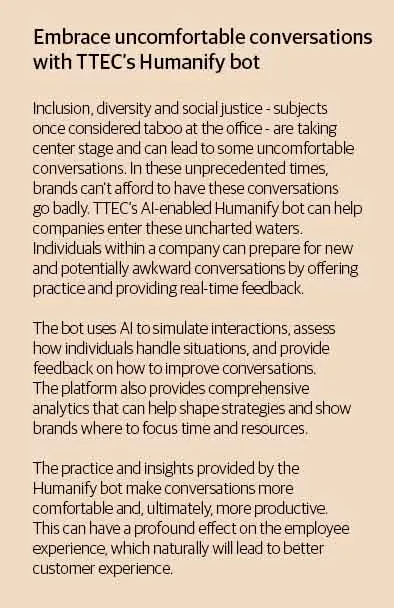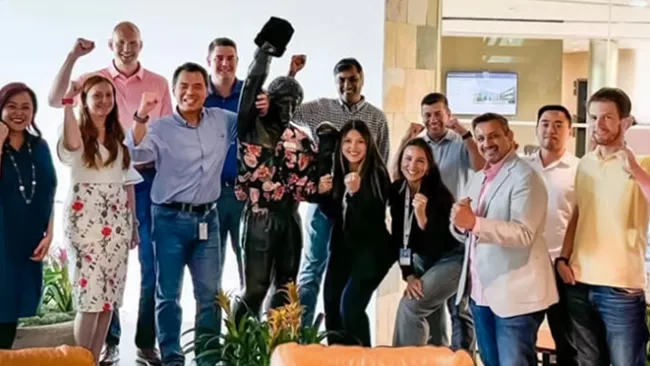Up until June 2020, some brands viewed diversity as merely a buzzword—something they considered thinking about. Maybe a concept they knew they “should” embrace, but one that was too easily pushed to the back burner.
The killings of Rayshard Brooks, Atatiana Jefferson, and others were in the spotlight as we were enclosed at home, with limited (if any) sports to distract us from the social injustice which evaded us – despite it being directly in plain sight. These images will forever be ingrained in our memories. There’s no denying the importance of diversity. Beyond being the “right” thing to do, making a concerted effort to become more diverse can pay big dividends to brands in the forms of productivity, innovation, employee experience and customer outcomes.
From to the black and white civil rights images to the advent of the rainbow flag, roses can grow concrete. The pandemic and the resulting lockdowns removed so much of the noise, static and distractions from our daily lives, giving us a rare opportunity to focus on one of the realest issues in our lives – social justice. During a year when the news dominated our collective consciousness, Breonna Taylor and George Floyd tragically became household names and the Black Lives Matter movement garnered international attention.
The world changed forever. Brands are embracing diversity in order to thrive; their ability to attract top talent and customers depends on it.
“With the tone of the world today, your personal life and journey can very easily spill over into your work life,” says Brigitte Cooney, CEO of NXT Generation Training, which specializes in executive leadership consulting and training services.
It’s not enough to merely support the idea of diversity; companies need to publicly:
- Proclaim their support;
- Make tangible goals toward building a more diverse brand;
- Hold employees accountable; and,
- Hold themselves accountable.
The above must happen, even if it leads to some uncomfortable, and downright awkward, moments along the way.
“Don’t do it because it’s popular,” says Cooney, “but because it is the right thing to do.”
Employees want diverse workplaces
The characteristics that make a workforce diverse have long been considered off-limits to discuss in the workplace. For too long, race, gender, religion, disability, sexual orientation, and other such topics were not talked about. It’s time to shed this taboo.
Attracting and retaining quality talent is going to be increasingly important in 2021 and beyond. The new generation of workers, people currently under 25, care a great deal about companies’ commitment to social responsibility. These under-25 workers are sons and daughters who are calling out their executives and parents – educating them and ensuring they play their part.
Unlike previous generations, they are not afraid to challenge authority. They also prioritize a brand’s social stances and causes, growingly more than salary, when deciding whether to work for a company.
“They [younger workers] are more action-oriented,” says Cooney. “Companies need them, and must make adjustments to their workforce to engage them.”
As the world becomes increasingly diverse, this generation wants to know how many leaders at a company look like them. The traditional “old boys club” doesn’t appeal to them; it’s not where they want to be. They know people are different, and they want to work somewhere that acknowledges and appreciates those differences, not somewhere that sweeps them under the rug.
“Younger people want a deeper connection to the work they do and the people they work with,” says Brenda Jones, president of NXT Generation Training.
Companies that don’t celebrate diversity are more likely to have a workforce that’s not engaged, she said; workers who aren’t engaged are less productive and perform more poorly than their peers.
To attract the next wave of talent, brands have to change their mindsets and be willing to have a culture that can evolve. It’s no longer about jobseekers fitting into a corporate culture, it’s about that corporate culture embracing candidates for who they are.
Once a diverse team is assembled, team members must be empowered to share their voices, says Cooney. “They should be included in the decision-making process,” she says.
Diversity drives innovation
It’s no secret that diversity spurs innovation. When people from different backgrounds and life experiences come together, they look at problems from various perspectives. The result is an energetic, eclectic collaboration that generates better ideas than those same people would have developed working in isolation.

This benefits employee and customer experience alike. Employees feel empowered to share their ideas, making them more invested in the process and its outcomes. It also makes them more likely to stay with a brand. That energy, and the innovations it inspires, subsequently leads to a better customer experience down the road.
There’s also a bottom-line benefit. In 2018, companies that had management teams with above-average diversity reported higher innovation revenue than those with less-diverse teams, according to a BCG study. The more diverse companies had revenue that was 19 percentage points higher than their counterparts.
Yet, despite all the benefits, diversity seems to have plateaued among senior management positions nationwide, BCG found. Black managers represented just 3.3 percent of senior management in the United States in 2018, down slightly from 3.6 percent in 2007. And the share of Black mid-level managers, which has been higher than that of senior managers, increased only slightly - from 7.3 percent in 2007 to 7.5 percent in 2018.
To bring more diverse voices to the table, companies should re-evaluate their hiring processes and how they identify prospective candidates. It can be easy and convenient, for instance, to continually hire graduates from Ivy League colleges and universities. But hiring the same type of people all the time doesn’t bring diversity; it brings more of the same.
Focusing on talent from historically black colleges and universities, on the other hand, can bring myriad benefits. These candidates are equally as talented as Ivy League alumni, bring added diversity - and, as a potential financial benefit, may not demand the same lofty salaries as their Ivy League counterparts.
Make diversity goals known
When committing to diversity, don’t keep it hushed in closed-door meetings—grab the proverbial megaphone for all to hear. Companies should start any diversity efforts by taking a public stance; this is what will make them accountable and, ultimately, successful.
Set clear goals around diversity and share them with people—employees, clients and the public. This can be difficult and counterintuitive to some, but it’s crucial. Say that your company is anti-racist and that it values inclusion and diversity. Take a stand and make it public. You’ve got to make a bold statement.
Even the most passionate leaders can’t make a company, or its culture, more diverse on their own. They need help, both internally and externally. Empowering the right people internally is key. Those are the people who know the brand’s culture. Getting external help, from people who have done what you are trying to accomplish, is equally important.
Amid these bold statements and disruption of the status quo, leaders may encounter pushback from some individuals within the organization. Don’t let that derail the mission. Leaders who have taken a stance they really believe in must be prepared to potentially lose talent. Some long-time employees may no longer be the right fit for where the organization is heading.
Employees need to understand and see how important diversity is to a company. It’s not enough to say you want a diverse organization; actions have to prove it.
Uncomfortable conversations lead to progress
For years, etiquette—and legal departments—told us to avoid uncomfortable conversations at work. Saying something controversial was viewed as too risky because it opened people and workplaces up to potential liabilities. Conventional wisdom said it was better not to talk about what makes us different from one another.
But it’s 2021 and time to embrace these exchanges, uncomfortable though they may be. Even labeling something as “taboo” implies that everyone is the same - that a topic will make all people squeamish or upset - when the reality, of course, is that we aren’t all the same.
It’s no longer acceptable to live and work in a bubble, and doing so can backfire on companies. Leaders who say nothing in the face of racism and social injustice can be called out for it, labelled racists and forced to defend their silence.
When it comes to diversity initiatives, a lot of progress starts in the top tier, says Cooney.
“Get executive buy-in first to change the culture of the company from the top down,” she says.
As Jones puts it: “Employees can’t go any farther than their leaders.”
For many, it’s human nature to want to avoid sensitive topics and conversations. But that’s not how progress happens. If these conversations go unsaid, people simply revert back to their old, comfortable ways. And that is no longer an option. In this age, employees and customers alike will increasingly hold brands accountable.
Brands may not want to have uncomfortable conversations around racism, bias and inequality. But the companies that will thrive aren’t the ones that will ignore them and turn a blind eye; they are the ones that will work to become part of the solution.
Learn more about TTEC’s AI-based training programs that help employees and leaders have uncomfortable conversations in a safe learning environment.















